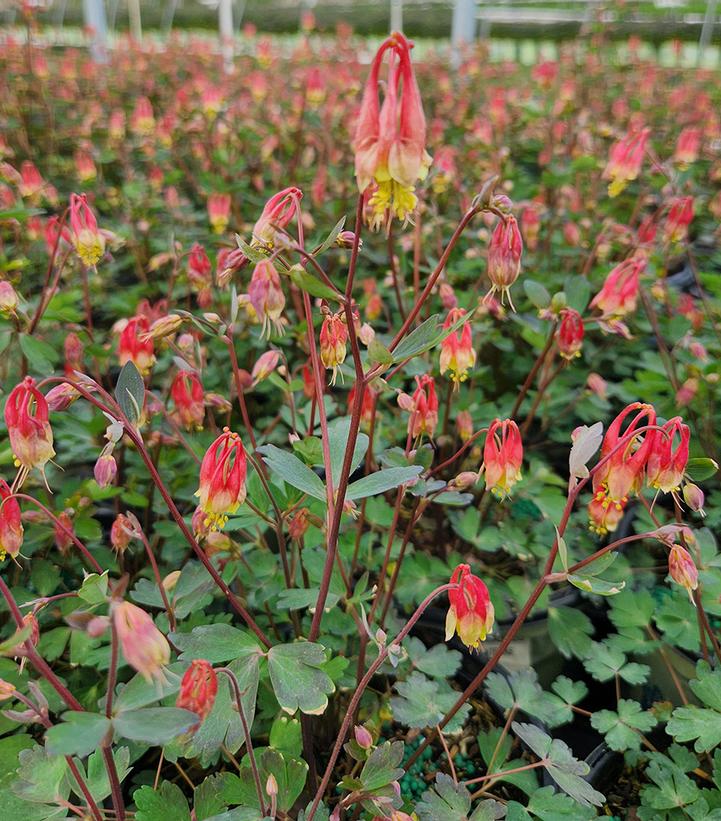Columbine (Aquilegia canadensis), also known as wild columbine or Eastern red columbine, is a graceful and airy native perennial that brings movement, color, and pollinator activity to spring gardens. With its delicate, nodding flowers in shades of red and yellow, Columbine is one of the first native wildflowers to bloom in Wisconsin gardens each year.
This charming plant is a Wisconsin native, commonly found in woodlands, open slopes, and rocky outcrops. It’s well-adapted to local conditions and thrives in partial shade, making it ideal for woodland gardens, naturalized borders, or even shady spots under trees where other plants might struggle.
Columbine blooms in mid-to-late spring, producing spurred, bell-shaped flowers that seem to dance in the breeze. The flowers hang gracefully from slender stems and have a unique shape that draws in hummingbirds and long-tongued bees. Their nectar-rich blooms are an important early food source for pollinators emerging in spring.
Typically growing 1 to 3 feet tall and about 1 to 1.5 feet wide, Columbine forms loose clumps with light, ferny foliage that remains attractive even after flowering. The leaves have a soft, lacy look and are bluish-green in color, offering gentle texture in shadier parts of the garden.
Aquilegia canadensis prefers well-drained soil with moderate moisture. It’s especially at home in lightly shaded beds, woodland edges, or dappled sun, though it can tolerate more sun in cooler climates if the soil stays evenly moist. Once established, it’s relatively drought-tolerant and doesn’t require much maintenance.
Columbine is a short-lived perennial by nature, often living only 3 to 4 years — but it more than makes up for that with its ability to self-seed in hospitable garden areas. You’ll often find new seedlings popping up in nearby beds, creating a more natural, wild look over time. If you prefer a tidier garden, simply deadhead the spent flowers before they go to seed.
Because it’s native to our region, Columbine supports a variety of local wildlife. In addition to hummingbirds and bees, it provides food for butterfly larvae and shelter for small beneficial insects. It’s also generally resistant to deer and rabbits, making it a great choice for woodland or rural gardens.
Columbine pairs beautifully with other native and shade-loving plants such as woodland phlox, ferns, Solomon’s seal, foamflower (Tiarella), and wild ginger. It’s also a lovely addition to more formal shade gardens when planted in small groups or along winding paths where its delicate blooms can be appreciated up close.
To care for Columbine, cut back the flower stems after blooming to encourage more compact growth. Mulch around the base to conserve moisture and suppress weeds, but avoid heavy mulching directly against the crown of the plant. You can leave some seedheads to dry and scatter naturally if you’d like to encourage reseeding.
At Heritage Hill Nursery, we love Columbine for its natural elegance, adaptability, and pollinator value. It’s one of those plants that feels right at home in both carefully planned garden beds and wilder, more natural settings.
If you’re looking to add movement, color, and native beauty to your spring garden, Aquilegia canadensis is a perfect choice. Stop in this week to see it in bloom and learn more about how it can fit into your Wisconsin landscape.

